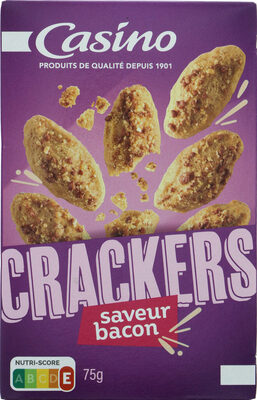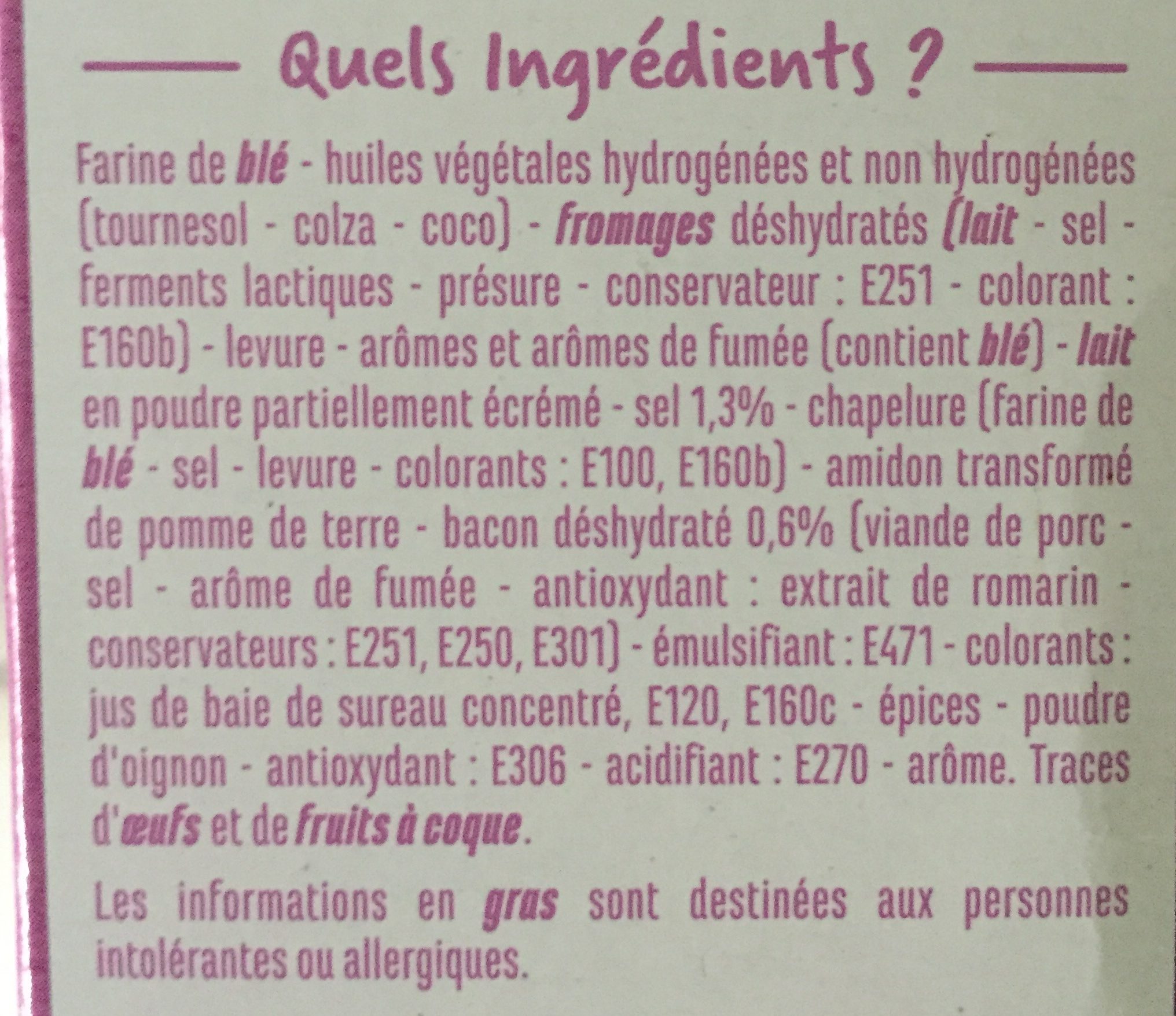Crackers Bacon 75G Co - Casino - 75 g
This product page is not complete. You can help to complete it by editing it and adding more data from the photos we have, or by taking more photos using the app for Android or iPhone/iPad. Thank you!
×
Some of the data for this product has been provided directly by the manufacturer casino.
Barcode: 3222472108528 (EAN / EAN-13)
Common name: Biscuits salés au Bacon
Quantity: 75 g
Brands: Casino
Labels, certifications, awards: Nutriscore, Nutriscore Grade E
Stores: Casino
Countries where sold: France
Matching with your preferences
Environment
Packaging
Transportation
Other information
Conservation conditions: A conserver à l'abri de la chaleur et de l"humidité.
Recycling instructions - To recycle: étui carton
Recycling instructions - To discard: sachet plastique
Report a problem
Data sources
Product added on by kiliweb
Last edit of product page on by alexfauquette.
Product page also edited by casino-off, openfoodfacts-contributors, org-casino, teolemon, yuka.U0lROEc2UmVxOU1wd05zYjN4RDA1OGtyMWIrTGUyL3RPdEJCSVE9PQ, yuka.sY2b0xO6T85zoF3NwEKvlmAYDcHsjjTfZh7ml26pnO-lCra5Qs5N847HbKs.






